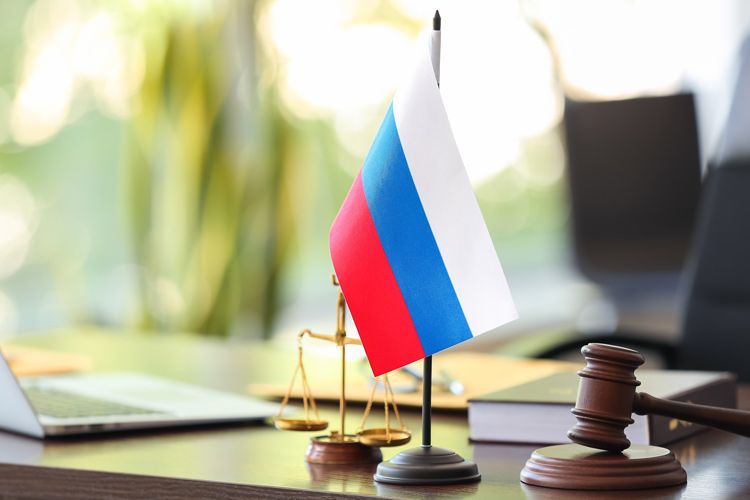Blog
Placing D&O Insurance in Russia
International companies with subsidiaries in Russia typically rely on large, international insurance carriers for local D&O insurance designed to respond in Russia. Sanctions and other restrictions arising after the Russian invasion of Ukraine have turned what was once a tried-and-true method for placing coverage upside down. My partner Jane Njavro, an expert in international D&O insurance, explains. –Priya
In our work with multinational corporations, we routinely place insurance programs with locally admitted policies around the world, including Russia. However, on March 15, 2022, Vladimir Putin signed a law prohibiting reinsurance transactions with “unfriendly states,” meaning insurers from the US, UK, Europe, and other countries that have condemned his invasion of Ukraine.
As the insurance industry adjusts to this new environment, many of our clients are wondering what this means for their D&O insurance program and what alternatives may exist.

Placing a Local D&O Insurance Policy
Let’s revisit why companies purchase locally admitted D&O policies in the first place. D&O insurance is regarded as personal, and the basic corporate goal is to protect individuals from personal liability. Some countries require an insurance policy purchased in that country to pay any in-country claims. This is sometimes referred to as an “admitted insurance” requirement.
Admitted insurance is subject to local taxes and is designed to comply with local laws. Sophisticated companies with a global footprint often find it advantageous to place their insurance using large global insurers who can provide locally admitted coverage that matches the company’s footprint. Some of the advantages of this type of program are ease of administration, consistent policy terms, and the ability to pay claims in-country with a strong insurer partner.
Multinational programs are underwritten on a global basis. Then policies are issued with “local insurers” that are typically a combination of owned offices and network partners. The local insurer reinsures or cedes the local exposure back to the global policy. As a result, the premiums allocated to local policies tend to be modest. Also, the local policies generally have lower limits as well; $1 million or $2 million is common. However, the primary policy sits excess of the local policy on a non-admitted basis.
What Has Changed?
As of today, most global insurers will be unable to provide a local D&O policy as part of the multinational placement on a going-forward basis. If you have a policy in place now, that policy is likely still valid, meaning the local Russian insurance should be able to pay a claim within Russia. However, the policy would not have the benefit of reinsurance from the global insurer.
Current local policies in Russia will not be able to be renewed upon expiration.
What Are the Alternatives?
Russian entities will now need to pivot to sourcing domestic coverage in Russia from a local Russian broker and insurer. The Bank of Russia announced an increase in capacity for Russian National Reinsurance Company to expand the ability of Russian carriers to reinsure domestic risks. Nevertheless, capacity is likely to be limited.
Another question: how will the policy terms, conditions, premiums, and claims paying compare to a multinational solution? Terms will likely be more restrictive; premiums and availability of insurance will vary depending on the risk profile of the company.
What Type of Insurance Placement Process Should We Expect?
One benefit of a multinational program is that the information required for underwriting at the local level is minimal. We would expect this to change for those who seek a local policy in the domestic Russian market. Instead, be prepared to complete a full application, and provide most recent financial statements, an organizational chart, and any required “Know Your Client” (KYC) and anti-money laundering (AML) documentation. Generally, it will be a more onerous process and may require multiple rounds of information gathering.
How Do You Choose a Russian Broker?
Shortly after Russia’s invasion of Ukraine, several global insurance brokers announced plans to exit Russia. Some are in the process of shifting the business to local management that are independent from their global owners. As part of the Assurex Network, Woodruff Sawyer partners with independent brokerages around the world. The Assurex Network member in Russia is GreCO, a domestic insurance broker. GreCO continues to operate and can help domestic companies navigate the new environment.
If you have an existing broker relationship, check on their ability to continue to provide services. The change with the new law means that global brokers are unable to guide the transition. All advice and insurance are required to be contained within Russia.
How Do You Choose a Russian Insurance Company?
In some instances, the local insurance company providing the D&O policy in Russia may now be able to take over that placement independent of the global program that had been backstopping the local program. The terms and premiums may change, but this is a sensible starting point to build on an existing relationship. Utilizing the existing insurer relationship may also help with the required underwriting information and premium payment process.
Managing global risk has always been a complex process. The current geopolitical situation highlights the challenges that multinational companies face when trying to protect their director and officers around the globe. While this article has focused on the logistics of insuring Russian subsidiaries, the human tragedy of the Ukraine invasion is top of mind. Our hope at Woodruff Sawyer is that a diplomatic solution can be found soon and the rebuilding process can begin.
For more information on handling insurance issues in light of Russia's invasion of Ukraine, click here to watch our recent webinar on this topic.
Author
Table of Contents












